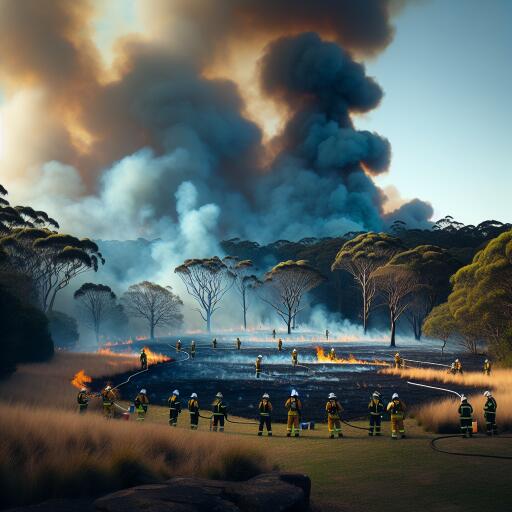
NSW Conducts Hazard Reduction Burn in Kur-ring-gai Park
In an essential move towards enhancing safety and biodiversity, NSW’s National Parks and Wildlife Service, in collaboration with the NSW Rural Fire Service, is undertaking a significant hazard reduction burn within the limits of the Kur-ring-gai Chase National Park. This operation, scheduled for Wednesday, 13 March 2024, targets an area extending over 134 hectares, positioned to the east of Duckholes Trail and surrounding the locales of Wirreanda Creek at Ingleside.
The designated burn area is strategically outlined, stretching from the vicinity of Duckholes Trail towards the borders marked by Mona Vale Road, McCarrs Creek Road, and Wirreanda Creek. To safeguard public safety, access to the Duckholes Trail and surrounding areas will be temporarily suspended. Furthermore, traffic regulations will be enforced along McCarrs Creek Road, with anticipated delays as a consequence of the operation.
The underlying goals of this controlled burn are multifaceted, primarily aiming to fortify the defense of adjacent properties in Ingleside against the threat of wildfires. Additionally, this operation seeks to mitigate the advancement of wildfires within the confines of Kur-ring-gai Chase National Park, while also fostering the preservation and enhancement of biodiversity by maintaining suitable fire regimes across the reserve system.
Residents and visitors in the vicinity may experience smoke impact, which could pose health risks, particularly to individuals with asthma or other respiratory conditions. It is advised that those affected remain indoors, ensuring windows and doors are kept closed, and adhere closely to their health management plans. Furthermore, individuals with pre-existing health conditions are encouraged to stay informed through air quality reports, forecasts, and alerts, available via email or SMS, and consult the Rural Fire Service’s website for continual updates on the planned burns.
The practice of conducting controlled burns serves numerous objectives, encompassing not only asset protection and strategic fire control but also the essential maintenance of biodiversity and research purposes. This hazard reduction burn is a part of a broader initiative spearheaded by the NPWS, undertaking numerous operations across New South Wales annually in collaboration with the Rural Fire Service and Fire and Rescue NSW.
For the year 2024, the NPWS has strategically aligned its hazard reduction program to prioritize essential burns. This proactive approach aims at minimizing bushfire fuel loads, which is critical to safeguarding the parks, their neighboring communities, and the biodiversity that resides within them. These hazard reduction efforts are a foundational aspect of preparing for and mitigating the impacts of summer bushfires, underscoring the relentless commitment to both community safety and environmental conservation.





Leave a Reply